News

New Gear Drop: 2 New TRX® Jump Ropes and Why You Need Them For Full-Body Workouts
Just when you thought there was only way to jump rope (aka, super fast), we’ve unleashed two jump rope experiences to liven up your cross-training and cardio.
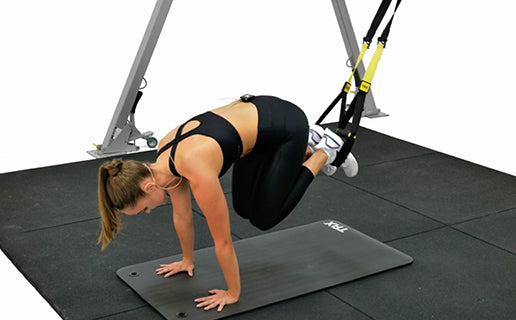
Crush This TRX® Full Body Workout in Just 10 Minutes
We’re always bragging about how the TRX Suspension Trainer™ lets you bring accessible, scaleable workouts wherever you go, and we’re proving it in this free, 10-minute, full-body session with TRX Training Club® Coach Stephanie Warwick.

Gear Spotlight: Why Gravity Cast Kettlebells Are Better
The best products come from repetitive testing and obsessive attention to detail. That’s exactly how TRX developed our Gravity Cast Kettlebells.
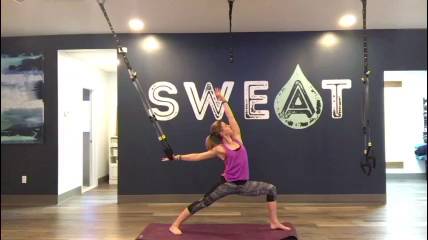
Why TRX for Yoga
TRX Suspension Trainer Tips for Yoga Yoga poses are ancient forms of movement meant to master the body and enhance the body's functions. When exploring a yoga pose using the TRX® Suspension TrainerTM, be clear on the intention of the yoga pose. Not sure which yoga variations are right for your practice level? Take our quick assessment quiz to get personalized pose recommendations and modifications tailored to your flexibility and strength. Leverage the Suspension Trainer to assist in the action of pulling, pushing, lifting, pressing or rotating to create a deeper expression.
TAKE OUR TRAINING QUIZ
TrainerTM incorporated into your yoga practice builds true resilience, improves balance and coordination, increases mobility, develops dynamic postural control and cultivates stress coping mechanisms. It teaches you how to engage and fire up the correct muscles needed to create a fuller expression of a posture. All of this in combination with the (ujjayi) yoga breath creates a meditation in motion that will clear your mind allowing exploration of your true potential.
Once the pose is set up, hold the pose for 3-5 ujjayi breaths. Creating more length and space in the body when you inhale and contracting and getting deeper into the pose when you exhale.
TRX Yoga Flow Rx:
Begin with 3-5 TRX Sun Salutations to prepare your body
Hold each pose for 3-5 Ujjayi breaths
Flow through all poses on your right followed by your left
Repeat the flow if you are looking to explore and get deeper into the muscles
Tips:
Keep tension on the straps at all time
Give yourself a few practices to learn how to leverage the TRX Suspension Trainer for its truest potential
Move from an active plank
Tips on Yoga Breath:
Breathe deeply and mindfully through your nose
Slightly constrict the muscles in the base of your throat to make your breath audible (create the sound of the ocean with your breath)
Inhalations match the length of your exhalations
Inhale to open, expand your body
Exhale to fold, contract, twist your body
Krystal Say is the co-founder of SWEAT Power Yoga and creator of TRX Yoga Flow. She is an advocate for total wellness, with a degree in exercise science and a senior educator for TRX Suspension Training. She is a self-proclaimed adventure seeking, fresh air enthusiast, sneaker lacing trail finder and Power Yogi.
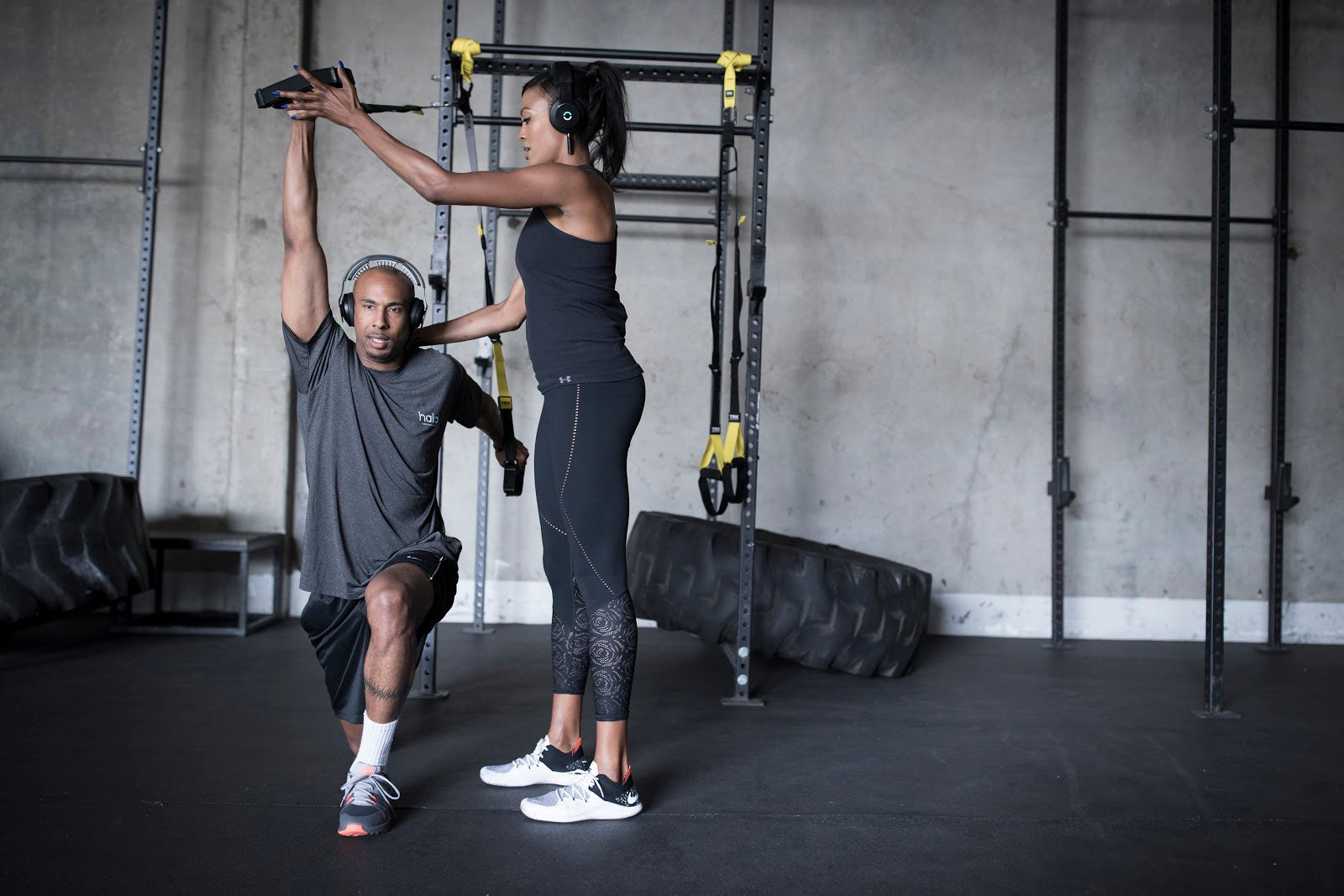
Why Elite Athlete Kari Pearce Loves Training for the Crossfit Games
Life as an athlete can be, as Dickens wrote, the best of times and the worst of times. Continuously improving performance means continuously challenging the body. One day, an athlete could be standing on top of a podium, and the next, they could be rehabbing an injury. But whether they’re at the top of their game or staging a comeback, athletes at every level turn to the TRX Suspension Trainer because TRX workouts are so easy to modify. Today, we’re looking at the reasons why two world class professional athletes love the Suspension Trainer to see anybody, anywhere, through any stage of their fitness journey.
Kim Glass — Olympic Medalist and Personal Trainer
Everything was going great for professional volleyball player Kim Glass… until it wasn’t. Glass, who won a silver medal with the U.S. Indoor Volleyball team at the 2008 Olympics, was playing professionally when she started experiencing back pain. She ignored the pain and powered through, as athletes are known to do. But the day finally came when she couldn’t ignore it any longer. Glass collapsed before a Team USA practice. The culprit? Disc herniation and sciatica.
“Being in a position where you can’t laugh hard, sneeze or cough, get yourself to rise out of the bed the way you’ve done over and over again throughout your life… not being able to bend over and put on your own socks, pants or shoes; it puts everything in perspective,” Glass said. “You start to realize the integral role your spine plays in your life, and how much you take for granted.”
Currently a personal trainer and model, Glass uses the TRX Suspension Trainer in her own workouts and recommends it to clients as well. “Many of my clients travel for work, and I suggest taking the Suspension Trainer on the road… It’s perfect to get a full body workout in, and easy to travel with and you can literally use it anywhere.”
As for her go-to moves? Glass loves the Suspension Trainer for Single-Leg Squats, Rows, Mountain Climbers and Y-Flies.
Kari Pearce - Fittest American Woman, Elite CrossFit Athlete
Even the three-time Fittest American Woman Kari Pearce suffers injuries from time to time. Pearce started gymnastics at age 3, and had her share of wrist and back problems over the years, but it was a partial Achilles tear during the 2016 CrossFit Games that proved the most challenging. “It was one of those nagging injuries,” she said. “I didn’t actually let it heal completely before I tried to compete again. It was a rollercoaster of getting better, and then I would compete so it would get worse.”
As an athlete competing with the fittest people on Earth, it was difficult for Pearce to overcome the feeling that she should be training because her peers were. “They might be injured as well, but in your mind those people are running, those people are doing double unders, and you’re not doing any of those things.” Nonetheless, Pearce recognizes that injuries need time to heal. “If not, you just keep going in the circle of being injured and starting to get well, but never letting yourself completely heal.”
Staying in top form is an ongoing process for Pearce, so she makes time for warmup exercises before she digs into her CrossFit training. While most people associate CrossFit with heavy weights and medicine balls, resistance also plays a role in the sport. Pearce uses her TRX Suspension Trainer for muscle activation, recovery, and strength workouts. “Probably 70 percent of the time, I carry it with me around New York City. When I have a little break, I go to Central Park and hook it up on the pull-up bars,” she said.
No matter where you are in the fitness cycle—amateur, elite, or staging a comeback—the TRX Suspension Trainer is designed to help you reach your goals because it’s one of the few pieces of exercise equipment that can evolve with you. In sickness and in health, athletes of every caliber know that TRX is made for anybody, anywhere.
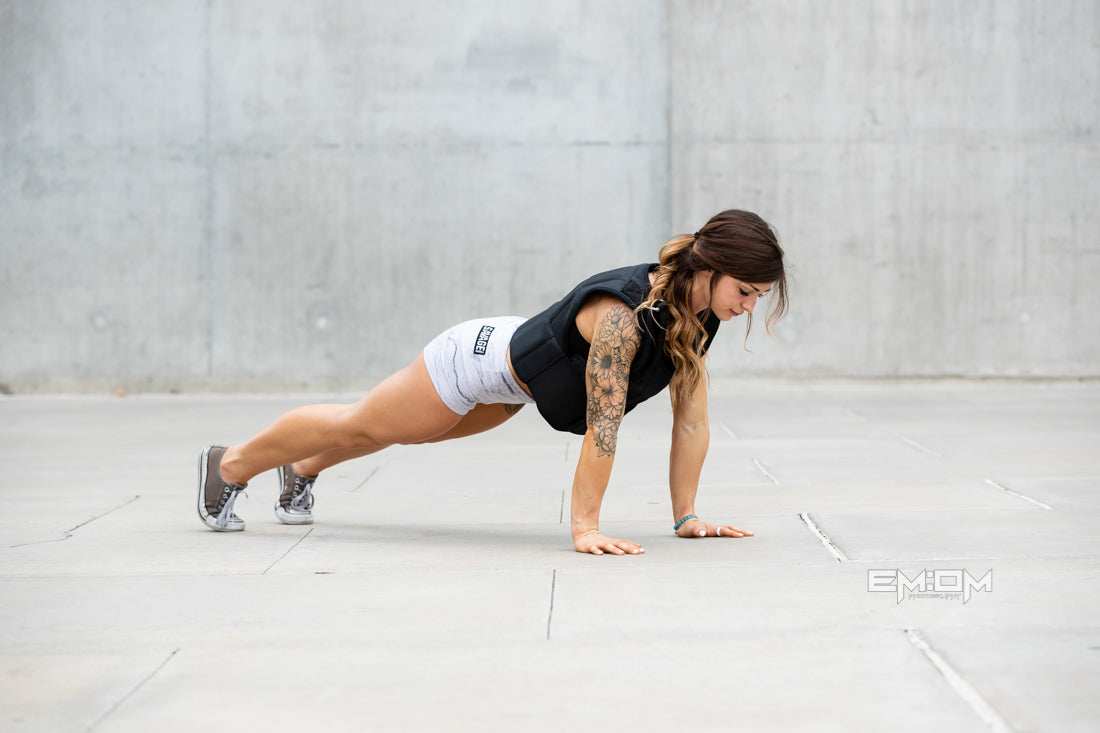
4 Bodyweight Exercises That Deliver Outstanding Results
Not to sound like a greeting card, but everything you need for strength is already inside you. Seriously, gear is great—and we obviously love creating the best fitness tools on the planet—but bodyweight training is awesome all by itself. (It was actually the inspiration behind our TRX Suspension Trainer™ .) The point is you can get a heart-pounding, muscle-pumping workout without any equipment at all. And since we love to work out with friends, we’re even hosting a series of free bodyweight workouts through our TRX Training Club℠ platform.
Before we hop into class together, let’s discuss why and how bodyweight exercises work.
Why bodyweight workouts work
Ever hear the saying “The best workout is the one you do”? Bodyweight workouts fall in that category. With a few basic bodyweight moves, you can always build a workout, no matter where you are. Sure, you could do something more intense with supplemental weights or bodyweight equipment like resistance bands, but bodyweight will get the job done.
Plus, most bodyweight exercises are actually full-body exercises, so bodyweight workouts are super-efficient. Think about it: When you plank, you have to engage your full body. In a squat, your core has to keep working to keep your chest lifted.
And there’s always a way to shake up the challenge of a bodyweight workout.
Push-ups starting to feel easy? Try a decline push-up, (i.e. hands on the floor, feet on an elevated surface). The same thing with lunges: When a step-back lunge ceases to challenge you, pop your back toe on a chair, and turn it into a Bulgarian split squat. There’s always a way to spice up an exercise, even without adding weight.
The goal of exercise—other than feeling great—is to increase endurance, strength, mobility, stability, and flexibility. Bodyweight workouts can do all of those things.
Why trust TRX®?
We’ve guided thousands of trainers through our TRX® Education programs, and we know what works. We’ve taught fitness professionals how to safely program and cue hundreds of workouts.
But we didn’t stop there.
Trainers, physical therapists, and wellness professionals don’t just take your word when you say, “Hey, I built this thing and it can help you increase strength and mobility.” No, you have to have science and expertise behind those claims. So we got that expertise.
We worked with a lot of people with a lot of letters behind their names to prove that our methods work. We’re talking PhDs and MDs and PTs; ACE, ACSM, and NASM-certified pros; definitely a few JDs; maybe even a DDS or DVM. Who knows?
Safe, efficient movement became our mission.
It’s true: We make really good tools for fitness. But more than anything, we’re committed to helping people move.
Yes, you can build muscle with a bodyweight workout
There are two components to building muscle: Muscle protein breakdown (MPB) and muscle protein synthesis (MPS). You increase your muscle mass through exercise when the MPS is greater than the MPB.
Strength training is typically associated with increased muscle mass, while sustained periods of aerobic training, (like distance running, swimming, or cycling,) are associated with lean muscle. For strength-training without weights, your tools for increasing muscle mass are tempo and time under tension.
High Intensity Interval Training, better known as HIIT, is a tempo-based solution. Studies show that regular HIIT workouts paired with strength exercises like squats and lunges can increase muscle mass. (Tempo variability—slowing down or speeding up an exercise—can change the challenge.)
To increase mass through time under tension, you slow down the pace, and hold an exercise at the hardest point of the move. For example, in a push-up, you could lower down from straight arms to bent arms on a count of three, hold at the bottom of your range of motion for a count of three, and then push up to straight arms quickly. That shaky feeling you get as you lower and hold is part of the time under tension burn.
In other words, lifting heavy stuff isn’t the only way to get stronger. And these principals don’t just apply to bodyweight exercise. They’re also the foundations of Suspension Training™.
Fun fact: Bodyweight powers the TRX Suspension Trainer!
Confession: We’re bullish on bodyweight because bodyweight is one of the elements that makes the TRX Suspension Trainer so effective. In the most simple terms, TRX Straps are a tool for changing the angle of a bodyweight exercise, whether that means upgrading or downgrading it.
Let’s talk about simplifying an exercise first, using bodyweight squats and TRX Squats as an example.
A lot of people dismiss squats as a beginner move, but there’s actually a lot involved. Core strength, balance, pelvic stability, hip mobility, and ankle dorsiflexion all come into play. As you get deeper into a squat, all of those elements have to come together for you to maintain proper form.
In a TRX Squat, the Suspension Trainer absorbs part of that work, helping you find your optimal range and stabilize. It can help you understand what “right” feels like, and even find a deeper squat.
That doesn’t mean a TRX Squat is “easier;” difficulty can be measured by multiple metrics. Here, we look at both strength and mobility. The Straps allow you to work through incremental strength variations, while increasing mobility.
The Suspension Trainer can also work to make an exercise tougher.
We previously used the example of the decline push-up as an upgrade to a standard push-up. You could also level up your push-up by placing your toes through the foot cradles of the Suspension Trainer. Not only does it create the decline position, but it also forces your core to work harder to overcome instability.
Bodyweight exercises could be too much for some people and not enough for others, but the TRX Suspension Trainer can make bodyweight training accessible—and challenging—for anyone, regardless of their strength-training background.
Bodyweight workouts are tough. We’ll prove it.
There are some real doozies in the bodyweight world: push-ups, sit-ups, speed skaters, burpees, sprinter starts, squats, lunges, mountain climbers, tricep dips, planks, accordion crunches. Here’s a simple workout you can do absolutely anywhere with just these moves.
For each set, do 45 seconds of work, followed by 15 seconds of rest. You’ll repeat all three exercises twice before taking a long 45-second recovery, and moving to the next set.
Set 1
Push-ups
Sit-ups
Tricep Dips
[45-second break]
Set 2
Sprinter Starts (Left)
Squats
Sprinter Starts (Right)
[45-second break]
Set 3
Mountain Climbers
Accordion Crunches
Alternating Lunges
[45-second break]
Set 4
Skaters or Curtsies
Plank
Burpees
[45-second break]
Total workout time: 39 minutes, with just bodyweight.
Want more? We got ya.
With TRX Training Club, our new streaming platform for classes, you can fire up a bodyweight workout from our On-Demand library absolutely any time. Access to the On-Demand library only is just $4.99 a month. Or, if you’ve got a TRX Suspension Trainer™ and you want to hop into our live classes as well, you can get an unlimited subscription for only $19.99 per month.
We want you to get hyped for TRX Training Club, so we’re throwing in a free week of unlimited classes to let you try it out. (First time members only, okay?)
If you still need more arm-twisting, we’ve got bodyweight-only community classes—that means free!—going for a limited time so you can see what the fuss is about before you decide when you want to start your (still free) trial week.
Bodyweight training is not a lesser form of training. For thousands of years, it was the only form of training. If you like to keep it old school, we want to work out with you. Hop into a TRX Training Club session, and discover how TRX brings the heat to bodyweight workouts.
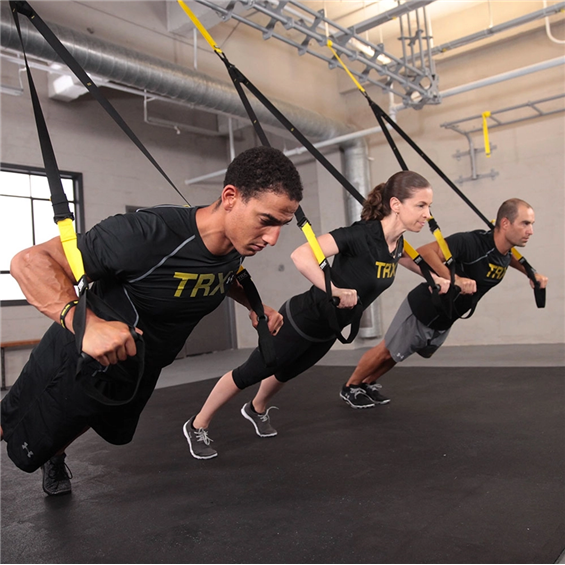
When to shorten and length the TRX Suspension Trainer
We get this question a lot: "How do I know when to shorten my straps, when to lengthen them and when I should have them at mid length?" Whether you're new to TRX or looking to optimize your form, our quick fitness assessment quiz can help you find the perfect exercise variations and strap adjustments for your level. Just as you have to change gears on a bike in order to maximize the performance of both bike and rider, adjusting your TRX strap length will ensure all users have the most optimal experience during each exercise.
TAKE OUR TRAINING QUIZ
The reasons to adjust length include the following:
Experience the full range of motion for each movement (i.e., mid length for TRX Y Deltoid Fly)
Accommodate space/height constraints (i.e., fully shorten for TRX Low Row)
Adjust for specific exercises (i.e., over shorten for TRX Muscle-up)
Prevent straps from rubbing (i.e., fully lengthen for TRX Chest Press)
Increase stability (i.e., shorten for TRX Hip Hinge)
In this video, Fraser Quelch addresses this question and gives some guidelines to help you determine the appropriate strap length of your TRX. Here's a quick cheat sheet if you're ever unsure:
Standing Exercises: Mid Length
Row Exercises: Fully Shortened
Pressing Exercises: Fully Lengthened
Ground Exercises: Mid Calf Length
Experiment and find what works best for you. Have fun!
Try one of our TRX products today:
TRX® PRO4 SYSTEM
BUY NOW
TRX® HOME2 SYSTEM
BUY NOW
TRX® TACTICAL GYM
BUY NOW
Fraser Quelch is Director of Training and Development for TRX. An expert in functional training and endurance athletics, Fraser has presented at events worldwide and is featured in numerous fitness DVDs. Fraser holds a Bachelor's degree in Physical Education and in 2011 was named co-recipient of IDEA's Program Director of the Year award.

What is Rip Training?
TRX Training
Originally created to meet the needs of combat sport athletes and physical therapists, Rip Training variable resistance exercise is a multi-faceted approach to strength and cardiovascular conditioning that challenges you in all three planes of motion every rep, every set, every workout. Equally adept as a rehab tool, a strength and conditioning tool, and a regenerative tool, the Rip Trainer is an exceptionally versatile resistance training tool for elite athletes, fitness enthusiasts, and beginners alike.
What is Rip Training?
Rip Training utilizes a lever bar and resistance cord to provide a unique mix of rotation, core stability, control, power, strength, mobility, metabolic conditioning, balance and coordination challenges. Want to discover if Rip Training is right for your fitness goals? Take our quick assessment quiz to get a personalized training plan that incorporates this innovative tool. TRX has developed a wide assortment of unique, leverage-variable resistance exercise movements, coaching cues, and programming and educational principles using the Rip Trainer, the collection of which comprises Rip Training.
TAKE OUR TRAINING QUIZ
The Rip Trainer allows users to engage in unlimited movements which, when performed properly, enhance fluidity and range of motion and decrease the risk of injury. Whether used for high speed striking movements or slow speed strength and stability exercises, the Rip Trainer is the perfect training tool for elite level athletes, fitness enthusiasts and even people wanting to exercise for the first time.
Life and sport require that we be able to both control and produce rotational force. Rip Training utilizes the same asymmetrical loading we encounter every day. Whether you’re carrying groceries, picking up your child, throwing a ball, or performing athletic movements such as swimming, running, and biking, your body is always producing rotation or controlling externally-induced rotation.Rip Training provides a simple, effective method to integrate rotational movements into training with the ability to layer on complexity to suit your goals.
Rip Training is also an effective solution for developing and challenging mobility and stability throughout the body.
Rip Training utilizes elastic resistance that allows for high-speed, low-load rotational movement training or low-speed, high-load rotational movement training.
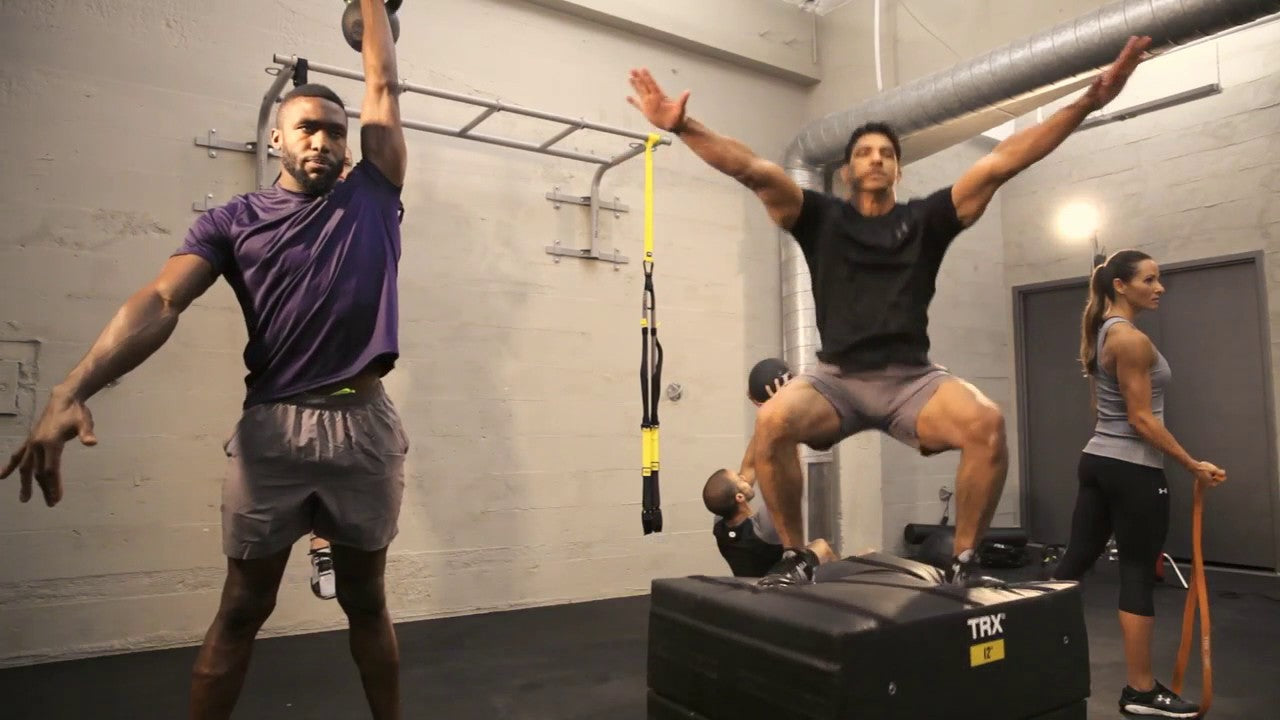
What Is Functional Fitness Training and Why Does It Matter?
TRX Training
Most folks exercise because they want to (1) lose weight, (2) maintain their weight, (3) tone up, and/or (4) relieve stress. Those are all valid reasons to commit to a fitness routine, but you can also exercise to simply improve the way you move throughout the world. Want to find functional exercises that match your daily activities? Take our quick assessment quiz to get a personalized plan that improves your real-world movements. There's even a name for better-at-life forms of exercise: functional training.
TAKE OUR TRAINING QUIZ
Functional training helps provide you with the strength, stability, and mobility you need to thrive in your life and sports. You use basic functional movement patterns like pushing, pulling, hinging, squatting, rotating, carrying and gait patterns—walking and running—every day.
Functional training equipment often includes resistance bands, suspension trainers, and free weights.
Functional training utilizes exercises that improve your movement proficiency in these primary patterns to give you an edge so you can achieve your goals safely and with good health. Seems smart, right?
Fitness professionals typically recommend functional training to pregnant women or clients recovering from injuries or illness as a replacement for standard endurance or strength training. The reasoning is that it’s best not to push a person’s body to engage in exercise that it can’t currently handle.
In the case of pregnancy, that could mean substituting upper or lower body exercises for core work. It makes sense: an expectant mother may not be able to execute a plank or a crunch, but she needs to strengthen her glutes and legs to help her walk and climb stairs with a baby bump.
While functional training for pregnant clients often happens at the gym, the foray into functional movement usually starts in physical therapy for clients recovering from injuries. Consider a patient who had knee surgery. Before he can run, he has to re-teach his muscles to do less demanding activities.
For athletes, functional training is a way to improve a person’s repetitive motion, like a golfer or tennis player’s swing, a surfer’s pop-up, or lateral movements for winter sports enthusiasts. There are even TRX videos designed to help athletes with functional training for their respective sports.
So you’re not pregnant, injured, or an athlete. Does that mean you get a free pass on functional exercise? Not at all. Fortunately, TRX Suspension Training is, in itself, a form of functional training. Suspension Training destabilizes your body, forcing your core and joint stabilizers to step up to the plate to keep you from toppling or buckling during a move. As you train your muscles to get better at firing up under those shaky circumstances, you’re improving your balance and stability, which will help you avoid injuries over time.
Even if you don’t want to spend time at the gym focused on function, you can supplement your workouts with your TRX Suspension Trainer at home. And if you want additional workout ideas that focus on improved mobility, you can try the TRX Healthy Joints routine.
Regardless of your fitness goals, abilities, or limitations, functional training should be a part of your exercise routine. You plan to live a long, healthy life, so start preparing your body for the journey now.
Try one of our TRX products today:
TRX® PRO4 SYSTEM
BUY NOW
TRX® HOME2 SYSTEM
BUY NOW
TRX® TACTICAL GYM
BUY NOW
